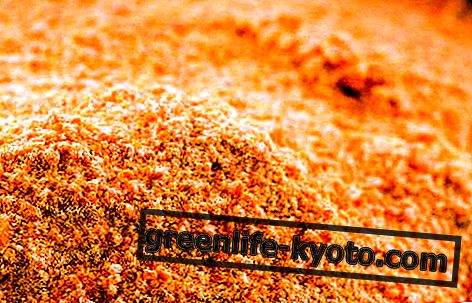
The interstitium is a complex organ, composed of a series of interconnected channels, which run through the whole body and are full of a particular liquid.
The interstitium appears to have as primary function that of " anatomical shock absorber " of the bumps for all the internal organs, but its study could even explain some mechanisms that would be at the base of the spread of the tumors.
Here are some ideas to learn more about the interstice .
Interstice, what is it?
The word evokes dusty spaces behind furniture, tile joints never cleaned well and other amenities.
Intended as "the new organ", on the other hand, the interstitium or interstitium consists of a dense network of canals filled with an aqueous solution (interstitial fluid), which are found almost everywhere in the human organism : under the skin, but also in the tissues that line the intestine, lungs, blood vessels, urinary system and muscles .
It is so widespread as to be one of the most extensive organs of our body.
To highlight and characterize this organ was a research group led by the Nyu School of Medicine, in the United States, in a study now published in Scientific Reports, thanks to the peculiarity of the technique used, namely laser confocal endomicroscopy.
It is a tool that allows to have images of cellular and sub-cellular structures, at a microscopic level.
The use of this technique has been fundamental in the research, because it allows to visualize also the liquid in the tissues, which otherwise, with the traditional biopsy techniques based on the use of slides, would be removed .
Therefore what is usually under the microscope is only that what remains of the "collapsed" tissues, that is, after the loss of the interstitial fluid that normally fills them.
Supported by a network of resistant and fexible connective tissue thanks to the presence of collagen and elastin, the interstitium is a real " anatomical shock absorber ", preventing the organs, muscles and blood vessels from being crushed or subjected to lacerations . The interstitium therefore forms as a single large channel, which flows along the body and protects the tissues and organs.
Interstice, because we talk about it
The "new" organ will talk a lot about itself as soon as the composition of the interstitial fluid can be analyzed directly .
The applications could be varied: the early diagnosis of inflammatory diseases or even cancer .
In fact the interstitial fluid comes from the lymphatic system and this connection implies that if the cancer cells reach the interstice they are more likely to spread to other body districts.
But the interstice could also play a fundamental part in other health fields :
> The formation of wrinkles, the aging of the skin, since it is located immediately below the epidermis.
> The stiffening of the limbs .
> The progression of some inflammatory diseases, thanks to the presence of stem cells in it.
This "newborn" interstice will give us great surprises!













